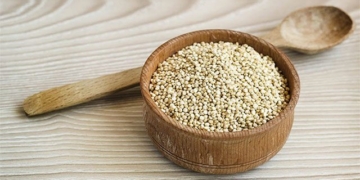The Earth’s crust is a hard surface that contains both oceans and land, occupying only 1% of the Earth’s volume. Oxygen, silicon, aluminum, and iron account for 88.1% of the mass of the Earth’s crust, while other elements make up the remaining 11.9%.
Gold, silver, copper, and other metals, although widely used, constitute less than 0.03% of the mass of the Earth’s crust.
1: Oxygen
To date, oxygen is the most abundant element in the Earth’s crust, making up 46% of its mass. Oxygen is a highly reactive element, often combining with other elements to form oxides. Some common examples of oxides include minerals such as granite and quartz (silicon oxide), iron rust (iron oxide), and limestone (calcium and carbon oxide).
2: Silicon
Silicon is the second most abundant element in the Earth’s crust. Silicon bonds with oxygen to form the most common minerals. For example, sand is a crystalline form of silicon dioxide (SiO2) found almost everywhere. Silicon is also an essential semiconductor used in the production of electronic devices and computer chips.
3: Aluminum
Aluminum is the third most common element in the Earth’s crust. Due to its strong affinity for oxygen, aluminum is rarely found in its elemental state. Common aluminum compounds include aluminum oxide (Al2O3), aluminum hydroxide (Al(OH)3), and potassium aluminum sulfate (KAl(SO4)2). Aluminum and aluminum alloys have various applications, from kitchenware to rocket production.
4: Iron
The fourth most common element in the Earth’s crust is iron, accounting for over 5% of its mass.
Iron is primarily obtained from the minerals hematite and magnetite. Among all mined metals, over 90% is iron, mainly used to produce steel, an alloy of carbon and iron. Iron is also an essential nutrient for the human body.
5: Calcium
Calcium makes up about 4.2% of the weight of the Earth’s crust. In its pure elemental state, calcium is a soft, silvery-white alkaline earth metal. It is never found in isolation in nature but exists in compounds instead. Calcium compounds can be found in various minerals, including limestone (calcium carbonate), gypsum (calcium sulfate), and fluorite (calcium fluoride).
Calcium compounds are widely used in the food and pharmaceutical industries. They are also used as bleaching agents in the paper industry, as components in cement, as insulators, and in soap production.
Humans have yet to venture deep into the Earth’s crust
Despite Jules Verne’s novel, no one has ever journeyed to the center of the Earth. In fact, the deepest hole ever dug by humans is approximately 12 km deep. This remarkable depth took about 20 years to achieve.
Although humanity continues to make new discoveries and reach for the stars, there is still much to explore about the Earth that we do not yet know.





















































